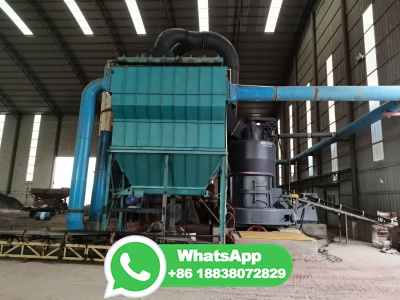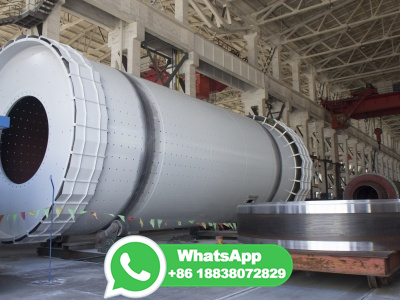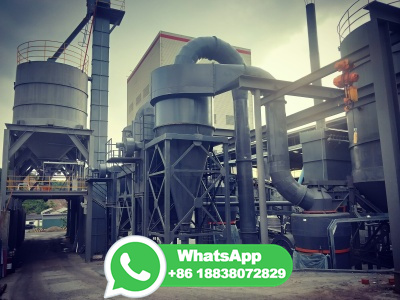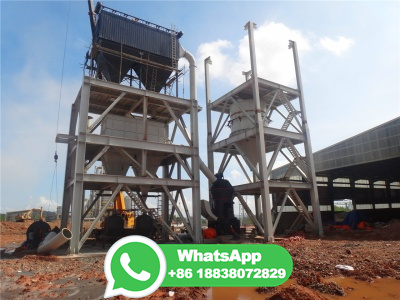
WEBVolume 5. Nicola Jane Wagner, in Encyclopedia of Geology (Second Edition), 2021. Coal Rank. Coalifiion is the process of metamorphism that takes place with time under conditions of increasing pressure and temperature. The original peat swamp vegetation is transformed to brown coal, lignite, subbituminous coal, bituminous coal (low, medium, .
WhatsApp: +86 18203695377
WEBThis is also called as soft coal. Fourth Stage – Anthracite Coal. This is the fourth stage in the coal formation. It is formed due to the high pressure and high temperature for a long period of time. It is hard, lustrous and has the highest percentage of carbon among peat, lignite, bituminous and anthracite. This is also called as hard coal.
WhatsApp: +86 18203695377
WEBCoal. Coal is a naturally occurring combustible material consisting primarily of the element carbon. It also contains low percentages of solid, liquid, and gaseous hydrocarbons and/or other materials, such as compounds of nitrogen and sulfur. Coal is usually classified into subgroups known as anthracite, bituminous, lignite, and peat.
WhatsApp: +86 18203695377
WEBIn general, anthracite is harder than bituminous coal. This is because it contains more carbon. In fact, both types of coal started out as the same thick deposits of soaked woody and organic material that collected in swamps about 280 to 330 million years ago. As time passed, this material turned into peat deposits that were buried by dirt and ...
WhatsApp: +86 18203695377
WEBsubbituminous coal, generally dark brown to black coal, intermediate in rank between lignite and bituminous coal according to the coal classifiion used in the United States and Canada. In many countries subbituminous coal is considered to be a brown coal contains 42 to 52 percent carbon (on a dry, ashfree basis) .
WhatsApp: +86 18203695377
WEBmain article. Anthracite is a dark black form of coal and the highest quality is very hard, has a low moisture content, and a carbon content of nearly 95%. When burned, anthracite can reach a very high addition, anthracite is usually the oldest type of coal, having formed from biomass that was buried 350 million years ago.
WhatsApp: +86 18203695377
WEBSep 1, 2016 · The orbital energies of bituminous, anthracite, ions and anions are shown in Fig. 3. A small difference is seen explicitly between the HOMO and LUMO energies of bituminous and anthracite coal respectively. While the HOMO energy of bituminous coal is − eV, the HOMO energy of anthracite coal is − eV.
WhatsApp: +86 18203695377
WEBSep 3, 2022 · Anthracite, specifically, is formed when bituminous coal undergoes very lowgrade metamorphism and structural deformation. It requires heat of around 340–480°F and relatively high pressure ...
WhatsApp: +86 18203695377
WEBJan 23, 2020 · With more heat and pressure lignite releases more hydrocarbons and becomes the highergrade bituminous coal. Bituminous coal is black, hard and usually dull to glossy in appearance. Still greater heat and pressure yields anthracite, the highest grade of coal. In the process, the coal releases methane or natural gas. Anthracite, a .
WhatsApp: +86 18203695377
WEBFor example, brown coal and lignite found near Moscow, Russia, were formed from plant deposits of the Carboniferous period. ... His regional distribution of coalbed methane was based on the geographical distribution of anthracite and bituminous coal deposits ... coal pyrolysis is an endothermic process. When coal is heated, it undergoes thermal ...
WhatsApp: +86 18203695377
WEBJan 29, 2020 · Bituminous coal contains moisture of up to approximately 17%. About to 2 percent of the weight of bituminous coal is nitrogen. Its fixed carbon content ranges up to approximately 85 percent, with ash content up to 12% by weight. Bituminous coal can be egorized further by the level of volatile matter; it contains highvolatile A, B, .
WhatsApp: +86 18203695377
WEBThe coalifiion process includes first a biochemical phase (that occurs in the peat swamp just after organic debris has accumulated and at very shallow depths) followed by a geochemical phase or coal second phase involves the largest and irreversible physical and chemical transformation from the lignite stage to the .
WhatsApp: +86 18203695377
WEBChanges in coal. As coal becomes buried more deeply, it goes through a sequence of changes in rank: from peat to lignite, subbituminous coal, bituminous coal, semianthracite, and anthracite. This process results in irreversible changes in the chemical and physical nature of the coal, and there can be considerable variation within a coalfield.
WhatsApp: +86 18203695377
WEBJan 1, 2016 · The coalifiion process produces water and carbon dioxide during lignite and lowrank coal formation, while in lowrank bituminous coals with more than 29 % volatile matter, mainly carbon dioxide is evolved followed by methane with small amount of heavier hydrocarbons, carbon monoxide, and nitrogen. As the lowrank coal is .
WhatsApp: +86 18203695377
WEBMetallurgical coal or coking coal [1] is a grade of coal that can be used to produce goodquality coke. Coke is an essential fuel and reactant in the blast furnace process for primary steelmaking. [2] [3] [4] The demand for metallurgical coal is highly coupled to the demand for steel. Primary steelmaking companies often have a division that ...
WhatsApp: +86 18203695377
WEBAug 18, 2021 · The geochemical process that converts lignite to bituminous coal or anthracite under the effect of geotemperature, geostress and time is called the metamorphism. This process includes two different stages, the chemical coalifiion stage and the physical coalifiion stage.
WhatsApp: +86 18203695377
WEBApr 15, 2019 · The effects of supercritical CO 2 (ScCO 2) on the pores and fractures found in coal may lead to changes in the permeability and adsorption capacity of coal [5], [6], [7]. In our previous paper published in Fuel in 2018 [10], the effects of ScCO 2 on mesopores (2–50 nm in width), macropores (>50 nm in width) and fractures in coal with ...
WhatsApp: +86 18203695377
WEBJun 19, 2023 · The process of coal formation is slow. It takes around 300 million years to form. The process of coal formation is known as coalifiion. The following are the steps for the process of formation of coal: (Peat rightarrow Lignite rightarrow Bituminous rightarrow Anthracite) Peat Formation: This is the first stage of coal formation. It is ...
WhatsApp: +86 18203695377
WEBJan 5, 2023 · Anthracitic Coal. Anthracitic coals are highrank coals. They are shiny (glassy) and break with a conchoidal (glasslike) fracture. Most coals do not reach anthracitic rank, which requires high heat from very deep burial, tectonic metamorphism, or contact metamorphism with igneous intrusions. The anthracitic rank is divided into three parts ...
WhatsApp: +86 18203695377
WEBJul 21, 2022 · Coal is a nonrenewable resource formed from decaying matter under heat and pressure that is primarily used to generate electricity. There are six main types of coal classified by carbon content and other properties: peat, lignite, bituminous, steam coal, anthracite, and graphite.
WhatsApp: +86 18203695377